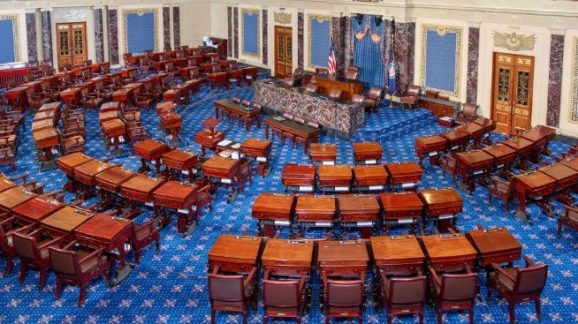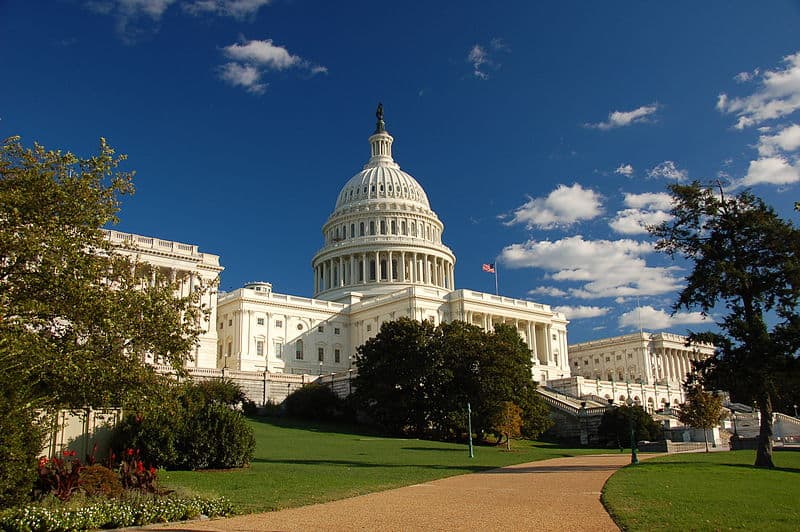3 Reasons the Senate Should Pass Financial Reform

 The Senate is expected to vote on its first major piece of financial reform this week since the Dodd-Frank Act of 2010. A bipartisan bill introduced by Sen. Mike Crapo (R-ID), the Economic Growth, Regulatory Relief and Consumer Protection Act, would bring decent relief to thousands of community banks and a number of regional banks across the country. While the bill does not go nearly far enough to fix the problems that Dodd-Frank created, it is a step in the right direction. Below is a brief look at three reasons why the Senate should pass Sen. Crapo’s bill.
The Senate is expected to vote on its first major piece of financial reform this week since the Dodd-Frank Act of 2010. A bipartisan bill introduced by Sen. Mike Crapo (R-ID), the Economic Growth, Regulatory Relief and Consumer Protection Act, would bring decent relief to thousands of community banks and a number of regional banks across the country. While the bill does not go nearly far enough to fix the problems that Dodd-Frank created, it is a step in the right direction. Below is a brief look at three reasons why the Senate should pass Sen. Crapo’s bill.
Better Tailoring of Regulation for Regional Banks
Rather than ending “too big to fail,” the regulatory regime established by Dodd-Frank has done more to entrench it. Currently, any bank with over $50 billion in assets is automatically considered a “Systemically Important Financial Institution,” making them subject to enhanced prudential regulation, as well as an implicit guarantee from the government to bail them out. In other words, the government does not just consider the largest banks as “too big to fail,” but also numerous medium-sized banks that pose no real risk to the economy. This places institutions such as Zions Bank in Utah with around $65 billion in assets under the same regulatory structure as JP Morgan with nearly $2.5 trillion in assets. The hypothetical failure of these two banks would pose wildly different risks to the economy, and yet they are regulated as if they were the same.
This kind of regulation just does not make sense. That’s why the Crapo bill proposes lifting the SIFI threshold from $50 billion to $250 billion in assets, while still permitting the Federal Reserve to apply enhanced regulation to banks between $100 billion and $250 billion in assets. Such a reform will exempt banks who engage in “traditional” banking activities, such as taking deposits and lending to small business, from an unnecessary layer of regulation. Depending on how it is implemented, this could remove a number of mid-sized banks from inappropriate regulation.
Regulatory Relief for Community Banks
The main proposals in the Crapo bill include a slew of regulatory relief measures for community banks, those Main Street institutions with less than $10 billion in assets. The hundreds of new rules and regulations imposed by the Dodd-Frank Act have devastated these banks, as they simply are not large enough to handle the billions of dollars’ worth of new compliance costs. As a result, more than one in five banks have disappeared across the country, at a rate of nearly one per business day. Such targeted relief includes exempting community banks from inappropriate regulations such as the Qualified Mortgage rule and the Volcker Rule. Exempting these small banks will get them back to lending to local businesses without being bogged down by government regulation.
Improving Capital Formation
Access to capital is one of the most vital features of a thriving economy, where entrepreneurs can turn ideas into products which improve our quality of life and investors who front the capital can build wealth. The Senate bill has a limited set of reforms that will help American entrepreneurs and investors. For example, early-stage venture capital funds that exceed 100-people must currently register with the Securities and Exchange Commission. The Crapo bill will raise that to 250 people. Further, the legislation would expand the SEC’s Regulation A+, passed as part of the 2012 JOBS Act, allowing small companies to raise millions of dollars directly from the public online. While such measures are limited, they are welcome reforms that will help American small business and entrepreneurs create jobs and grow the economy.
While Sen. Crapo’s legislation is a rather modest proposal, it is nevertheless an important first step to fixing the mess that Dodd-Frank created. The Senate would do well to demonstrate a successful example of bipartisanship and pass S.2155.